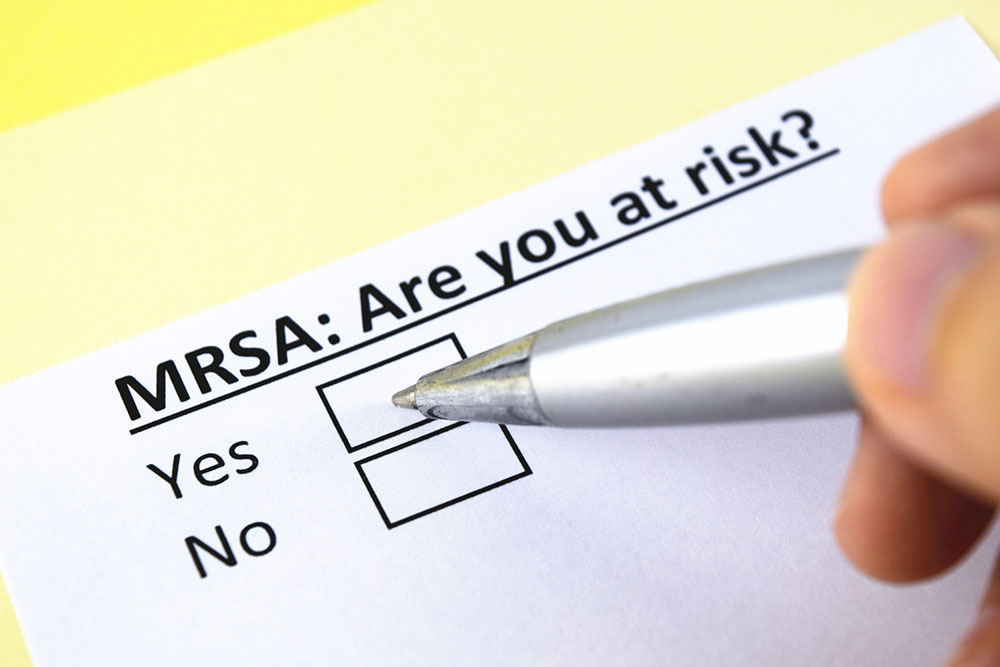Symptoms and Treatment Methods for MRSA
MRSA is an infection caused by bacteria that are resistant to most common antibiotics. These skin infections can be painful and it can even lead to other complications if the bacteria enter the bloodstream. However, this condition can be treated, if identified quickly. Read on to find how to treat MRSA.
What is MRSA?
Staphylococcal Aureus is a bacteria that is part of the microflora in the human body. It is present in the respiratory tract, the nose, and the skin.

If you have any cuts or abrasions on the skin, this bacteria can cause a skin infection which is also referred to as MRSA. MRSA can be a Healthcare-Acquired condition or Community Acquired.
In HA-MRSA, people who are admitted to hospitals for surgery or other procedures like IV tubing are vulnerable to this condition. In community-acquired or CA-MRSA, the bacteria spread through contact, i.e skin to skin. Children at school, childcare workers, people who work in crowded environments can be at risk.
However, this is not a cause for panic, because most people have this staph bacteria in their body without getting or causing an infection. In fact, CA-MRSA is much milder than HA-MRSA.
According to recent data, both HA and CA MRSA are on the decline. But, it is still a common skin infection and is also one of the most common causes of infections in the bloodstream.
MRSA can be treated with certain select antibiotics.
Symptoms of MRSA
Symptoms of MRSA are red bumps on the skin that are painful to touch. They may be swollen and filled with fluids that begin to leak out. This may be accompanied by fever and fatigue. In severe forms of MRSA infections, mostly in HA-MRSA or long ignored CA-MRSA, you may feel a sensation of pain, cough, shortness of breath, and chest pain.
Data released by the Centers for Disease Control shows that most people carry the Staph bacteria in their nose and 2% of the population carries MRSA—without being ill and without causing illness in others. Only when there is a cut, wound, or a severe illness that has resulted in lowered resistance to diseases do you need to be careful.
How to treat MRSA
If you have a painful bump that is leaking, go see a doctor. It may not just be an insect bite. The doctor will perform an examination, take a sample of the bump in the skin and do a lab test, to confirm MRSA. In severe cases, other tests like urine and blood tests may be done to see if the MRSA has spread to the bloodstream and to other parts of the body.
Treatments for MRSA
- Usually, just cutting and draining the infected bump or blister, and using a prescribed topical antiseptic ointment is enough.
- If the skin infection does not respond quickly to topical treatment, you may be prescribed a course of antibiotic medicines that are still effective on the MRSA bacteria.
- If you are prescribed antibiotics, take the full course. If you stop before the full course because the symptoms are gone, it can make you less reactive to these drugs. Which means, it could become difficult to treat any infections that you may develop in the future
Prevention
If you have an MRSA infection, take a break from work and stay isolated as MRSA is extremely contagious. Do not share clothing, toiletries, and other items. Follow the doctor’s orders and the prescribed course of treatment. Once the infection is cured:
- Practice good hygiene.
- Always clean your hand before meals and after doing any work that leaves dirt and stains on your hands.
- Clean wounds and cuts immediately with clean water and a disinfectant to prevent bacteria from entering your body.
- Teach your children good hygiene practices.
- Eat good immunity-boosting foods, and cut down on junk foods.
- Do not take antibiotics unnecessarily, as it will increase your resistance to these medicines.
How to treat MRSA with home remedies
- Use a warm compress to treat the swelling and pain in the affected area. Pour warm water on a clean cloth, squeeze out excess water and apply over the infected area. Wash this cloth separately, using a disinfectant along with a detergent.
- You can mix a small amount of an essential oil like tea tree oil or oregano oil with another conditioning oil and apply it on the infected region. Both tea tree and oregano oil have antibacterial properties.
- Coconut oil itself has antibacterial and antioxidant properties, so it is very good in healing and repairing wounds. You can mix tea tree oil with this or just apply plain coconut oil on the bumps and blisters.
- Aloe vera gel can act as an antiseptic that will heal the wounds, and also provide relief from pain. Use pure aloe vera gel to treat your MRSA skin infection.
- Turmeric has powerful antibiotic properties. There is ongoing research to combine the curcumin compound found in turmeric with antibiotics to develop more powerful antimicrobial drugs.
- Combine turmeric with coconut oil to make a paste and apply this on the MRSA bumps and blisters.
- Add a teaspoon of turmeric to a cup of milk, boil it, and drink this mixture, to fight the infection and to boost your immune system.
- Eat foods that are rich in immunity strengthening nutrients.
MRSA affects 1.2 million people each year. However, it can be treated effectively with a combination of topical applications, medicines, maintaining a good hygiene, and following a healthy diet. You can also try some safe and tested home remedies like coconut oil, tea tree oil, and turmeric. It is always best to seek medical advice if you are unsure about the condition.


